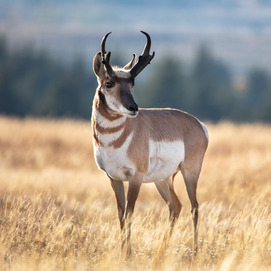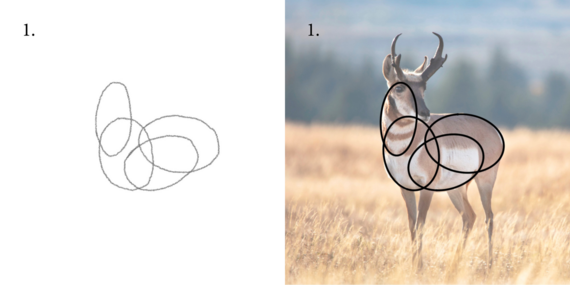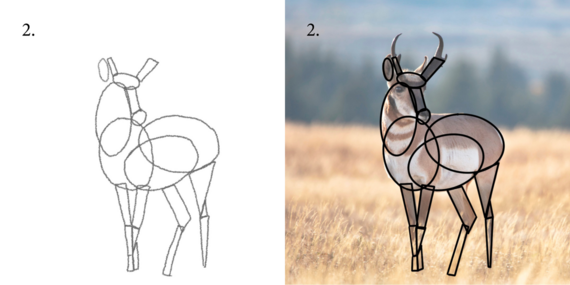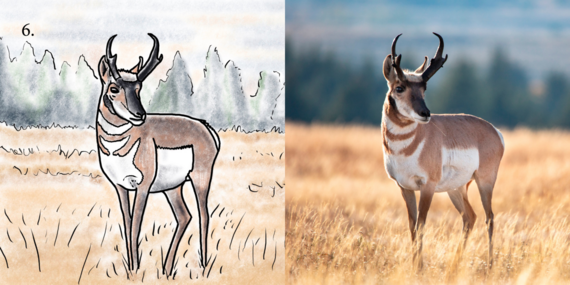Learn to draw pronghorn
Follow the steps below to learn how to draw a pronghorn with the art element “line". Line is used to create the definition of an art piece.
When we draw animals or objects, thinking about where to start can be somewhat overwhelming. An easy solution is to break them up into simple shapes such as circles, triangles and others.
What you'll need:
- Piece of paper (1)
- Pencil, sharpened (1)
- Eraser (1)
Optional:
- Colored pencils, markers, or crayons (multiple in varying colors)
- Pen (1)
Are your drawing materials gathered? Let’s begin!
 |
|
For this drawing, we will be using this photograph of a buck pronghorn as a reference. |
Step 1) Look for large, simple shapes
For this step we want to lightly draw with a pencil so that it can later be erased. Start with large circles first. These represent the general shapes of the body parts of the animal, like the chest, torso, thigh and neck.
 Step 2) Draw smaller, simple shapes
Add smaller shapes you see in the pronghorn like triangles, ovals and trapezoids. These represent body parts such as legs, forehead, snout, ears and horns.
 Step 3) Erase simple shapes and outline the pronghorn
Lightly erase the simple shapes you’ve drawn up to this point. You want to erase as much as you can but the shapes should still be barely visible. While referring to the photo reference, start drawing the outlines of the animal by following the contours of the shapes you just erased.You do not need to draw lightly for this part and all of your lines don’t need to be straight. For example, you can use squiggly lines to show fur and hair and curved lines for the horns.
Step 4) Start drawing details
After all of the outlines are finished, you may now start drawing the more detailed features of the body, such as where the fur changes colors, eye, horn tips, nose and mouth.
Step 5) Draw the pronghorn habitat
You may stop here, but feel free to draw the habitat your pronghorn lives in. You can try to draw the habitat from the reference photo or create your own. Pronghorn live in all different types of habitats including plains, sagebrush steppes and deserts.
Step 6) Add some color
Use colored pencils, markers and/or crayons to add color to your picture. Pay attention to light and dark colors and how colors blend into each other.
 Step 7) Be proud of yourself
Sign your name at the bottom of your paper so everyone knows you made this beautiful art piece! Display it somewhere in your home or give it to a loved one.
Remember that sometimes, we may not like our first, second or even third attempt when we draw animals and that’s okay! Don’t be afraid to start over and keep practicing.
|
